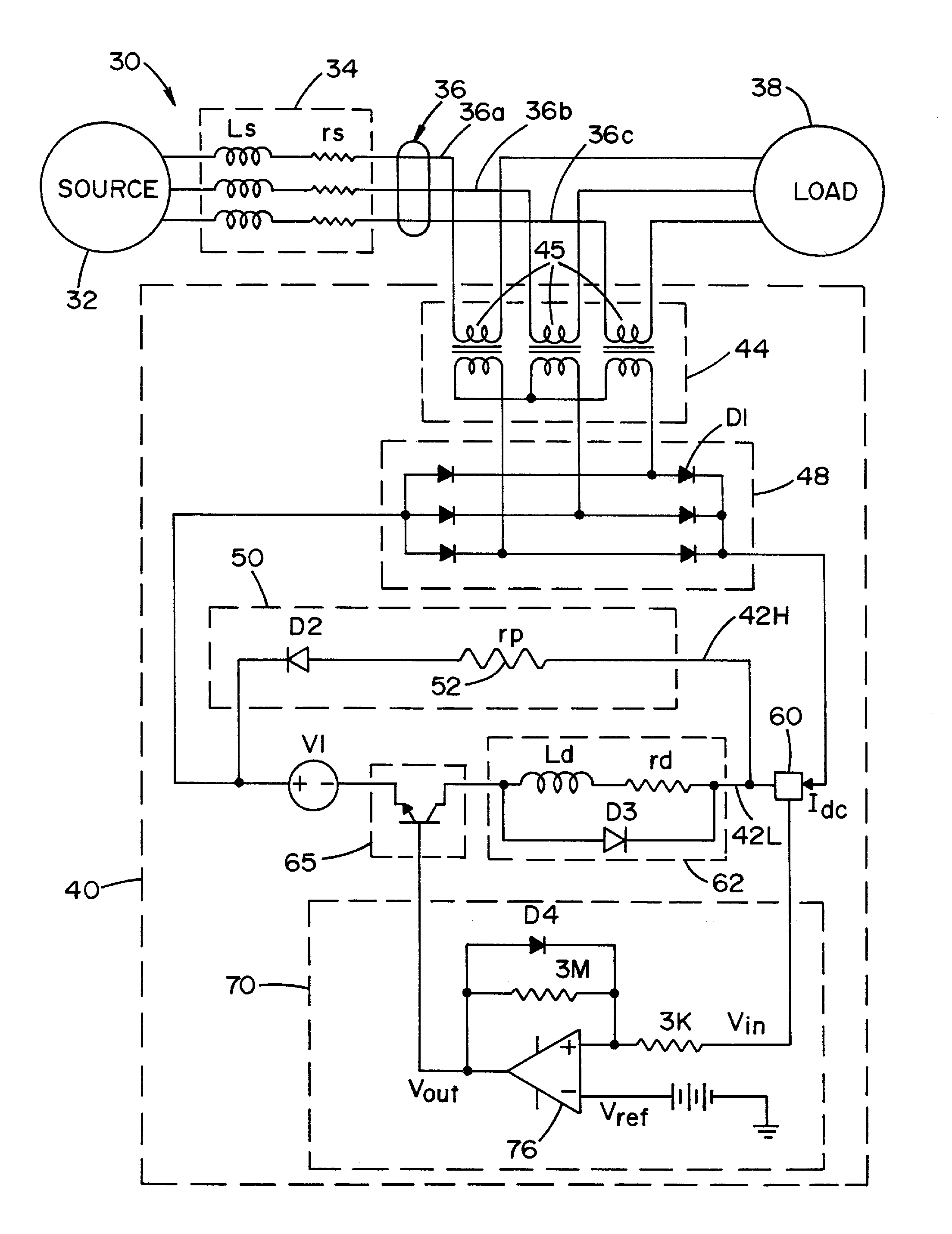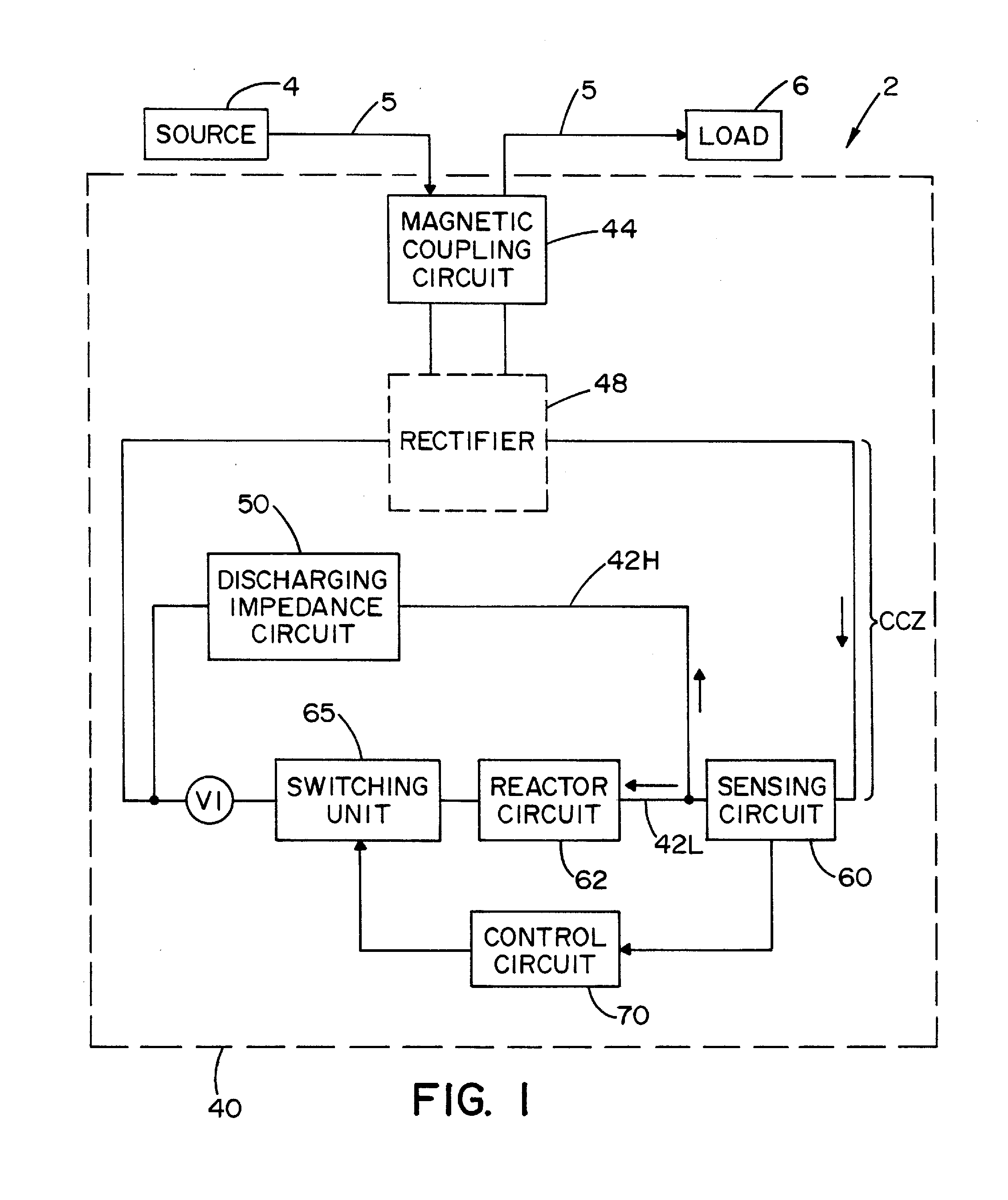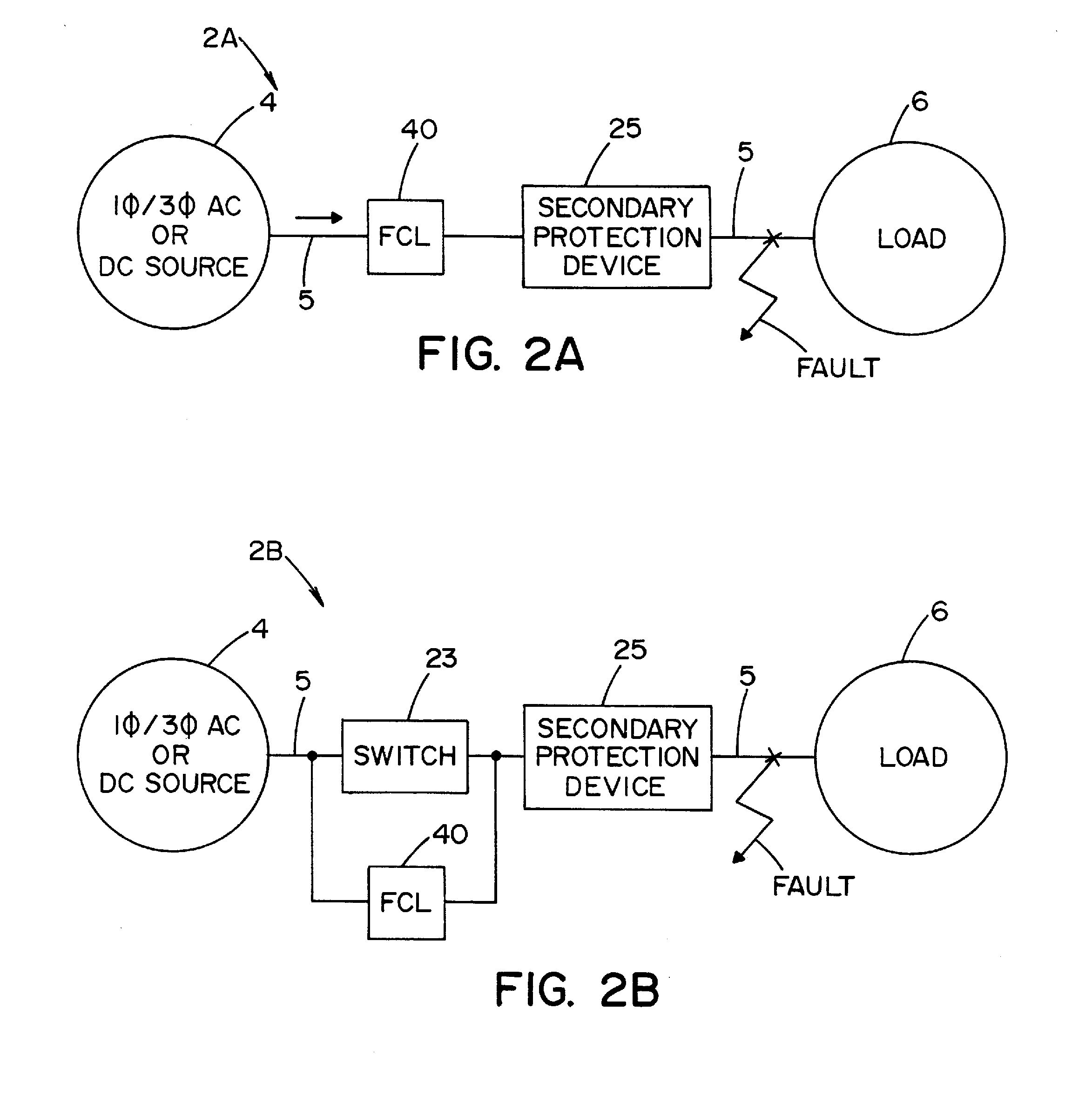Fault current limiter
a fault current limiter and fault current technology, applied in the direction of emergency protective circuit arrangement, emergency protective arrangement for limiting excess voltage/current, electric devices, etc., can solve the problems of fcl technologies, increased fault current in the power system, and over-rated devices, etc., to achieve less manufacturing cost, less weight, and more compact
- Summary
- Abstract
- Description
- Claims
- Application Information
AI Technical Summary
Benefits of technology
Problems solved by technology
Method used
Image
Examples
example
[0077]Example FCL 40 will now be described with reference to FIG. 5 and TABLE 1. TABLE 1 provides a list of major components selected for the sample prototype.
TABLE 1DevicePartDescriptioncurrentCR MAGNETICS1:1 ratio, 40 A, 1.5 lbs.transformers10WP-00545rectifierDIODES Inc.1000 V reverse voltagediodes D110A07-Tforrectifier 48switchingFAIRCHILD600 V, 20 A 3-phase IGBTunit 65FSAM20SH60Ainverter bridge with drivers, 40 AIGBT collector current (peak)dischargingYageo80 W, 15 Ωresistor 52AHA80AJB-15R-NDblockingDIODES Inc.1.5 A surface mount glassdiode D2S2AApassivated rectifierreactorMURATA680 μH, 3.1 A, quantity = 6inductor1400 Seriescoil Ld1468431CsensingHoneywellminiature ratiometric linear Hall-circuit 60CSLH3A45effect sensor
[0078]Current transformers 45 have a low stress rating during normal operation (30V, 5A and 210 W), and are highly stressed during a fault condition (450V, 30A and 14 kW). Since the fault condition typically lasts for only about 200 ms, current transformers 45 can ...
PUM
 Login to View More
Login to View More Abstract
Description
Claims
Application Information
 Login to View More
Login to View More - R&D
- Intellectual Property
- Life Sciences
- Materials
- Tech Scout
- Unparalleled Data Quality
- Higher Quality Content
- 60% Fewer Hallucinations
Browse by: Latest US Patents, China's latest patents, Technical Efficacy Thesaurus, Application Domain, Technology Topic, Popular Technical Reports.
© 2025 PatSnap. All rights reserved.Legal|Privacy policy|Modern Slavery Act Transparency Statement|Sitemap|About US| Contact US: help@patsnap.com



